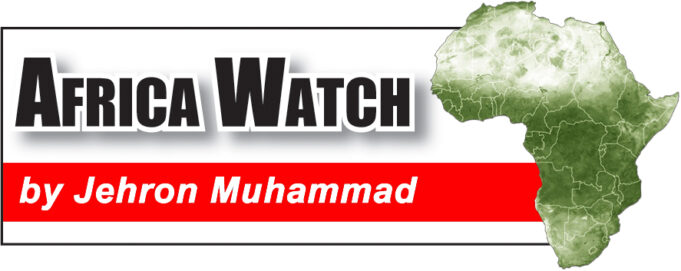In a piece in the November/December 2024 edition of Foreign Affairs, headlined, “America’s Strategy of Renewal: Rebuilding Leadership for a New World,”
U.S. Secretary of State Antony Blinken defines what he considers “a new age in international affairs.” True to American foreign policy form, he takes Russia, Iran, North Korea and China to task.
While claiming that “their forms of governance, ideologies, interests, and capabilities differ,” Blinken describes their similarities, writing, “revisionist powers all want to entrench autocratic rule at home and assert spheres of influence abroad.”
While defaming China and in what sounded like a plan to extract Africa’s much-in-demand raw mineral reserves, Blinken briefly mentions the continent in his article.
Toward the end of his article, Africa receives scant but special attention along with the U.S. and its neocolonial European investors. The U.S. and European investors are “making a series of infrastructure investments in a band of development that crosses Africa—
Connecting Angola’s port of Lobito to the Republic of the Congo and Zambia and ultimately linking the Atlantic and Indian Oceans—which will create opportunities for communities throughout the region while shoring up the supply of critical minerals crucial to leading the clean energy transition,” Blinken writes.
However, according to spglobal.com what Blinken does not share, is that America is “Motivated by a desire to break China’s grip on African mineral supply and bypass the logistical bottlenecks in South Africa that have constrained copper and cobalt exports in recent years, a U.S.-
And European Union-backed partnership is investing heavily in upgrading and extending the existing rail corridor linking northern Zambia and the southern DRC to the Port of Lobito in Angola.”
The April 2024 article on spglobal.com titled, “Dueling rail projects hint at intensifying contest for Africa’s critical minerals,” says it all. S&P Global explained that the U.S.,
“In partnership with Angola, the DRC and Zambia, as well as the African Finance Corporation and the African Development Bank … and the EU have mobilized nearly $1 billion for the project through the Partnership for Global Infrastructure and Investment initiative (PGII),” the article noted.
The PGII, established in 2022, “is a collaborative effort by the G7 to finance infrastructure projects in developing countries and is widely interpreted as a mechanism for countering China’s Belt and Road (highly successful infrastructure) Initiative,” the article continued.
However, in his writing about infrastructure investment in Africa, Blinken in his “foreign policy redux,” failed to explain the horrors and dangers of the cobalt mining industry.
Al Jazeera on its September 12 “The Listening Post” program, gave viewers a look into how “child labor was being used extensively in artisanal mines, in the Democratic Republic of Congo, the DRC.”
According to the program’s narrator, “An army of children are at the heart of the mining production companies like Apple (Computer).” He added, “They said that they would stop purchasing cobalt from artisanal mines and get their supply only from the industrial regulated sector.”
But, according to a 2021 report published in the New Yorker Magazine titled, “The Dark Side of Congo’s Cobalt Rush,” after four years or as soon as the media attention died down, the practice of buying artisanal mined cobalt continued.
Siddharth Kara, the author of Cobalt Red, was featured on this episode of “The Listening Post.” “Tech and EV companies will have us believe there’s this thick wall between commercial industrial mining with heavy equipment, and then this artisanal activity. And the truth, the reality is, it’s all coming into the formal supply chain,” Kara said.
Also featured on the program was journalist Sylvie Manda, who said, “When the ore leaves the (mine) shaft you can trace it to a point, but then it gets taken to stalls outside the big mines and is bought by traders who go on to sell it to other larger companies.”
Candy Ofime, researcher of Climate Justice at Amnesty International, added, “What we found interesting is that big tech entities that make billions of dollars have such difficulty with traceability.”
Ofime explained that supply chain mapping is a difficult exercise, but asked if an organization like Amnesty International can map out a safe supply-chain route with limited access to confidential information, why can’t these big mining interests, with all the access and money in the world?
“Really the onus is on them and that’s why it’s not enough for companies to say, ‘Well, you know we are not able to really understand what’s happening at the point of (mineral) extraction,’” Ofime said.
Being at the center of global natural resource exploitation is a story that the East African country of DRC knows all too well. The first time it happened was during the Industrial Revolution and the brutality that went along with natural resource extraction, including the chopping off limbs if Congolese people did not make their quota of rubber.
The U.S. government has a history of exploiting the DRC’s mineral resources. Predating the development of electric cars and growing need for the DRC’s cobalt it was the U.S. mining of uranium in there that was used for building of atomic weapons.
The health effects on indigenous Africans, included from renal failure, diminished bone growth and damage to DNA.
Follow @JehronMuhammad on X













